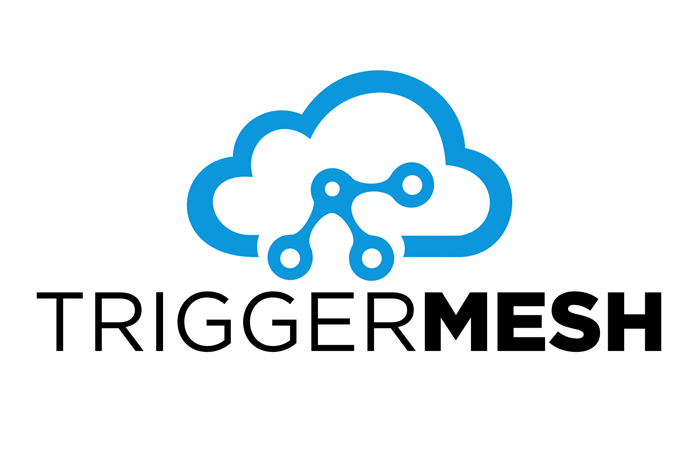Off-by-none: Issue #111
October 13, 2020
Only have a few minutes? Check out this week's MOST POPULAR links as chosen by our email subscribers.
Lambda just got some Extensions… 🔎
Welcome to Issue #111 of Off-by-none. Get ready for some serverless!
Last week, we got a new serverless time series database, saw that the race for gRPC at the edge had started, and learned about Lambda from a 12 year old. This week, we get Lambda Extensions, a full stack serverless manifesto, and a reality check on the state of the serverless revolution. Plus, we’ve got lots of great serverless content from the community.
Lambda Extensions and DLQs for EventBridge!
Last week, AWS announced AWS Lambda Extensions, which allows tools to more easily integrate deeply into the Lambda execution environment to control and participate in Lambda’s lifecycle. It’s still in preview, but they launched with several partners including Epsagon, DYNATRACE, Thundra, and more.
Yan Cui does a great job explaining what are they and why do they matter, plus Julian Wood has an excellent introduction along with some instructions for building extensions on your own.
In other really interesting serverless news, Amazon EventBridge announced support for Dead Letter Queues. This adds another layer of resiliency to your serverless applications, and as Chris Munns explains, adds improved failure recovery as well.
Serverless News & Announcements 📣
When your architecture is Serverless and Serviceful, Mashable, Open, K8s-based, and Event-driven, the sky’s the limit. Read the SMOKE stack Whitepaper. Sponsored
The serverless space is always filled with interesting news, including a report that Google is planning to relinquish control of its open-source Knative project amid pressure from its partners. And in other GCP news, they also announced new capabilities for Cloud Functions including languages, security and more.
IBM Cloud announced Code Engine, a new service that looks to compete against something like Cloud Run. It can either run your container workloads directly, or use a buildpack to run function code. It also says it can handle “run-to-completion” batch jobs, as opposed to Lambda’s 15 minute max timeout.
And Akamai enabled microservices deployment at the edge by expanding their Edgeworkers into a full-blown serverless computing product.
Serverless Stories 📖
David Anderson from LibertyIT explains why Well-Architected Serverless systems were a great choice given the unexpected requirements of 2020.
Anna Anisienia shows us why it took 2 days and 7 engineers to move data between S3 buckets. And, no, it’s not because her devs were inefficient.
And see how the Orange County United Way’s Homelessness Prevention Program created a production-ready application in three weeks to deliver critical help to those affected by Covid-19. I’ll give you a hint, they didn’t set up a Kubernetes cluster.
Serverless Concepts 🏗
In case you need a more visual explanation of Amazon Timestream, Jerry Hargroves has you covered. You might want to check out this one on AWS Step Functions as well.
If you’re building serverless apps with PHP, Pietro Iglio did some benchmarking of serverless Laravel vs Lumen with Bref that you may find interesting. And while you’re at it, take a look at part 3 of The Complete AWS Lambda Handbook for Beginners to round out your Lambda knowledge.
Anthony DiMarco gives a pretty good rundown on how to use WAF and CloudFront with serverless applications, and Vittorio Nardone explains how to properly use AWS Lambda layers. I agree that using them for sharing source code is probably a fool’s errand.
Paul Swail is kicking off a series on Serverless Testing, starting with his thoughts on the testing trade-off triangle. Plus, Jesse Warden suggests single purpose functions with this AWS Lambda Function design best practice.
Serverless Tutorials 👷♀️
You didn’t really think Ben Smith was done with serverless PHP, did you? The serverless LAMP stack part 6: From MVC to serverless microservices is an excellent piece that’s applicable to all serverless applications (not just those written in PHP). He outlines the many benefits of moving from the “Lambdalith” to a microservices design, and how that will create a more maintainable application.
Vishnu Prasad demonstrates how to perform load testing of serverless applications with Serverless Artillery, Matthieu Napoli has some CloudFormation to help setup email alerts on SQS dead letter queues, and David Sandor has a lengthy post that explains how to properly use CloudFront to cache an API with Cache-Control and HTTP 304 to provide cache revalidation functionality.
Serverless Reads 🤓
Twitter has not been kind to Bernard Brode for his article titled, Why the Serverless Revolution Has Stalled, and for very good reason. First of all, the Serverless Revolution has been going strong and the ecosystem has been improving for quite some time. So the fact that the article recycles the same old tired criticisms that may have been true a few years ago is laughable at best. Second, the serverless ecosystem shouldn’t be judged on nascent offerings from companies just jumping on the bandwagon. The maturity of these technologies at early proponents, like AWS, is a much better measuring stick. And finally, whether or not it’s a “new” idea has literally no impact on its current adoption cycle. Most ideas are ahead of their time, and are often unsuccessful because there isn’t a market for it yet. There’s not only a huge market for serverless right now, but even the trend in containerization is pushing that technology to more “serverless” offerings.
Turning back to the positive, Nader Dabit wrote The Full Stack Serverless Manifesto to explain how serverless lowers the barrier-to-entry for traditional frontend developers.
There’s also this article on Microservice Dreamin’ that not only makes the case for building applications with serverless, but does a good job dismissing the vendor lock-in argument.
Videos, podcasts and more… 🍿
On the latest episode of Serverless Chats, I spoke with Xavier Lefevre about what a Typical Serverless Architecture looks like on AWS, why you need to think more about your total cost of ownership (TCO), and how to use his serverless cost calculator to estimate common serverless workloads.
Marcia Villalba has a follow up to her “What is Serverless?” video that shows you how to get started with AWS Lambda. Another great starting point for the serverless newbie.
New from AWS 🆕
Besides the amazing announcements of Lambda Extensions and EventBridge DLQs, there were plenty of other product updates from AWS this week.
For example, Amazon CloudWatch Lambda Insights is now in preview, which allows you to monitor, troubleshoot, and optimize the performance of your AWS Lambda functions. Plus, CloudWatch Application Insights now offers a new and improved user interface.
For those needing to send SMS messages, applications using Amazon SNS to send SMS can now be hosted in five new regions. Then a day later they added two more.
A new Amazon Builders’ Library article explains how to avoid overload in distributed systems by putting the smaller service in control, and they’ve updated the Distributed Load Testing solution to use Step Functions.
Amazon Kinesis Data Analytics now supports Force Stop and a new Autoscaling status, Amazon Rekognition adds support for six new content moderation categories, and AWS Lake Formation now supports cross account database sharing.
And finally, though not serverless, Amazon ElastiCache for Redis added support for Redis 6 with managed Role-Based Access Control (RBAC). That’s a rather significant improvement that should allow your serverless applications to use a shared Redis cluster with much great security.
Thoughts from Twitter 🐦
“NoSQL databases are way overused and development projects should default to SQL. Change my mind.” ~ Joe Eames
Interesting opinion from Joe Eames, but I weighed in to say that it has more to do with understanding that SQL and NoSQL are not interchangeable. If you understand that, you’re likely to make a better default choice.
Serverless Jobs 👩💻 Sponsored
Serverless Engineer – stedi.com
At Stedi, we’re working in one of the biggest markets on the planet – EDI, the technological backbone of the physical product economy. We’re building a next-generation platform: a ubiquitous commercial trading network to automate the trillions of dollars in B2B transactions exchanged by nearly every company on Earth. If you’re interested in what we’re building and how we’re building it, we’d love to hear from you.
Have a job listing you’d like to share? Please contact me for more information.
Upcoming Serverless Events 🗓
There are a lot of upcoming serverless events, webinars, livestreams, and more. If you have an event you’d like me to mention, please email me.
October 22, 2020 – The Future of Video Streaming on The Edge With Serverless Computing, featuring FloSports (Webinar)
October 22, 2020 – Troubleshooting AWS Serverless Applications (Webinar)
October 27, 2020 – AWS Community Day Amsterdam (Online Event)
October 28, 2020 – ServerlessDays Virtual
Serverless Star of the Week ⭐️
There is a very long list of people that are doing #ServerlessGood and contributing to the Serverless community. These people deserve recognition for their efforts. So each week, I will mention someone whose recent contribution really stood out to me. I love meeting new people, so if you know someone who deserves recognition, please nominate them.
This week’s star is Sara Gerion (@Sarutule). Sarah is a Solutions Architect at AWS Cloud and Director of Tech at S#E (pronounced SheSharp), a non-profit organization based in Amsterdam that fosters diversity and inclusion in technology and entrepreneurship, especially to those in under-represented demographics. In addition to both of these roles, Sara also is a co-organizer at ServerlessDays Amsterdam and has shared her knowledge about serverless at events like ServerlessDays Cardiff, and on Yan Cui’s RealWorld Serverless podcast. Thank you, Sara, for your commitment to diversity and inclusion, and serverless! 🙌
Final Thoughts 🤔
It’s always an interesting week when new releases that push past the limits of serverless are juxtaposed with an article that uses outdated information to support incredibly weak arguments. It’s important to remember that the vast majority of people do not know or understand what serverless is, and therefore don’t understand the significant impact it can have on your organization’s productivity, security, and ability to compete in a market dominated by tech giants like Twitter and Facebook. This may be a bit hyperbolic, but I believe that articles that misinform people about serverless are doing a major disservice and potentially endangering the potential for success of fledgling startups. Do better.
I hope you enjoyed this newsletter. We’re always looking for ideas and feedback to make it better and more inclusive, so please feel free to reach out to me via Twitter, LinkedIn, Facebook, or email.
Take care,
Jeremy
Sign up for the Newsletter
Stay up to date on using serverless to build modern applications in the cloud. Get insights from experts, product releases, industry happenings, tutorials and much more, every week!
This Week's Top Links
We share a lot of links each week. Check out the Most Popular links from this week's issue as chosen by our email subscribers.
This Week's Sponsors
Check out all of our amazing sponsors and find out how you can help spread the #serverless word by sponsoring an issue.
About the Author
 Jeremy is the Director of Research at CloudZero, founder of Ampt, and an AWS Serverless Hero that has a soft spot for helping people solve problems using the cloud. You
can find him ranting about serverless and cloud on Bluesky, LinkedIn, X, the Serverless Chats podcast, and at
conferences around the world.
Jeremy is the Director of Research at CloudZero, founder of Ampt, and an AWS Serverless Hero that has a soft spot for helping people solve problems using the cloud. You
can find him ranting about serverless and cloud on Bluesky, LinkedIn, X, the Serverless Chats podcast, and at
conferences around the world.
Nominate a Serverless Star
Off-by-none is committed to celebrating the diversity of the serverless community and recognizing the people who make it awesome. If you know of someone doing amazing things with serverless, please nominate them to be a Serverless Star ⭐️!

